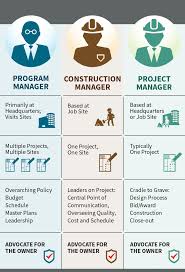The Importance of Construction Project Management
Construction project management plays a crucial role in the successful completion of any building project. It involves planning, coordinating, and overseeing a wide range of tasks to ensure that the project is completed on time, within budget, and to the required quality standards.
One of the key aspects of construction project management is effective communication. Project managers must communicate clearly with all stakeholders, including clients, architects, engineers, contractors, and suppliers. By maintaining open lines of communication, potential issues can be identified early and resolved promptly, helping to prevent delays and cost overruns.
Another important aspect of construction project management is risk management. Project managers must identify potential risks and develop strategies to mitigate them. By anticipating challenges and developing contingency plans, project managers can minimize disruptions and keep the project on track.
Cost control is also a critical component of construction project management. Project managers must create detailed budgets and monitor expenses throughout the project lifecycle. By tracking costs closely and making adjustments as needed, project managers can ensure that the project stays within budget without compromising quality.
Effective scheduling is essential for successful construction project management. Project managers must create realistic timelines for each phase of the project and ensure that tasks are completed on schedule. By managing resources efficiently and coordinating workflows effectively, project managers can prevent delays and keep the project moving forward smoothly.
In conclusion, construction project management is vital for ensuring the success of building projects. By focusing on communication, risk management, cost control, and scheduling, project managers can overcome challenges and deliver high-quality results that meet client expectations. With skilled leadership and careful planning, construction projects can be completed successfully and efficiently.
5 Essential Tips for Effective Construction Project Management
- Establish clear project goals and objectives from the beginning.
- Develop a detailed project plan outlining tasks, timelines, and responsibilities.
- Communicate effectively with all stakeholders throughout the project.
- Regularly monitor progress and address any issues promptly.
- Ensure proper risk management strategies are in place to handle unforeseen challenges.
Establish clear project goals and objectives from the beginning.
Establishing clear project goals and objectives from the beginning is a fundamental tip in construction project management. By clearly defining the desired outcomes and milestones at the outset, project managers can align all stakeholders towards a common vision. This clarity helps to guide decision-making, resource allocation, and task prioritization throughout the project lifecycle. Clear project goals provide a roadmap for success, enabling teams to stay focused, motivated, and accountable as they work towards achieving the desired results within the specified timeline and budget constraints.
Develop a detailed project plan outlining tasks, timelines, and responsibilities.
Developing a detailed project plan outlining tasks, timelines, and responsibilities is a fundamental tip in construction project management. By creating a comprehensive roadmap for the project, including clear task assignments and deadlines, all team members have a clear understanding of their roles and the project’s overall timeline. This detailed plan helps to ensure that everyone is on the same page, minimizes confusion, and promotes accountability throughout the project lifecycle. Additionally, having a well-defined project plan allows for better coordination of activities, efficient resource allocation, and effective risk management strategies to be implemented proactively.
Communicate effectively with all stakeholders throughout the project.
Effective communication with all stakeholders is a fundamental tip in construction project management. By maintaining clear and open lines of communication with clients, architects, engineers, contractors, and suppliers throughout the project, potential issues can be identified early and resolved promptly. Regular updates and transparent dialogue help ensure that everyone involved is on the same page, leading to smoother workflows, better decision-making, and ultimately a successful project outcome.
Regularly monitor progress and address any issues promptly.
Regularly monitoring progress and promptly addressing any issues that arise is a critical tip in construction project management. By keeping a close eye on the project’s development, project managers can identify potential problems early on and take corrective action to prevent them from escalating. Addressing issues promptly helps maintain the project timeline, budget, and quality standards. Effective monitoring and timely intervention demonstrate proactive leadership and ensure that the construction project stays on track towards successful completion.
Ensure proper risk management strategies are in place to handle unforeseen challenges.
It is essential in construction project management to ensure that proper risk management strategies are in place to effectively handle unforeseen challenges that may arise during the project. By identifying potential risks early on and developing proactive strategies to mitigate them, project managers can minimize disruptions, prevent costly delays, and maintain the overall progress and success of the construction project. Effective risk management is key to navigating unexpected obstacles and ensuring that the project stays on track towards timely completion and within budget constraints.


Leave a Reply